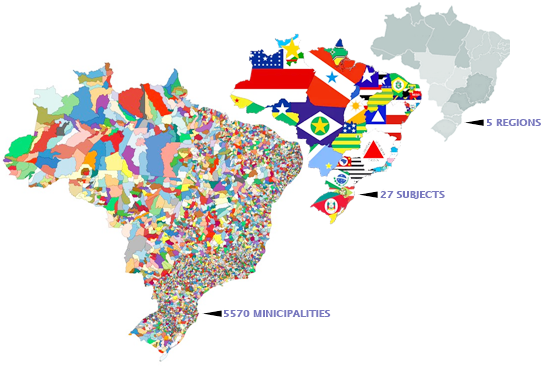'Brazil' likely comes from the Portuguese word for brazilwood, a tree that once grew plentifully along the Brazilian coast. In Portuguese, brazilwood is called pau-brasil, with the word brasil commonly given the etymology "red like an ember," formed from brasa ("ember") and the suffix -il (from -iculum or -ilium). As brazilwood produces a deep red dye, it was highly valued by the European textile industry and was the earliest commercially exploited product from Brazil. Throughout the 16th century, massive amounts of brazilwood were harvested by indigenous peoples (mostly Tupi) along the Brazilian coast, who sold the timber to European traders (mostly Portuguese, but also French) in return for assorted European consumer goods. The official Portuguese name of the land, in original Portuguese records, was the "land of the Holy Cross" (Terra da Santa Cruz), but European sailors and merchants commonly called it simply the "land of Brazil" (Terra do Brasil) because of the brazilwood trade. The popular appellation eclipsed and eventually supplanted the official Portuguese name. Some early sailors called it the "land of parrots". In the Guarani language, an official language of Paraguay, Brazil is called "Pindorama". This was the name the indigenous population gave to the region, meaning "land of the palm trees" (Wikipedia, SEE).
Brazil is a federation composed of 26 states, one federal district, and the 5,570 municipalities. The Union, the states, the Federal District, and the municipalities, are the spheres of government. The federation is set on five fundamental principles: sovereignty, citizenship, dignity of human beings, social values of labor and freedom of enterprise, and political pluralism. The classic tripartite branches of government (executive, legislative and judicial under a checks and balances system) are formally established by the Constitution. The executive and legislative are organized independently in all three spheres of government, while the judiciary is organized only at the federal and state and Federal District spheres. All members of the executive and legislative branches are directly elected. For most of its democratic history, Brazil has had a multi-party system, with proportional representation. Voting is compulsory for the literate between 18 and 70 years old and optional for illiterates and those between 16 and 18 or beyond 70. The country has more than 40 active political parties. Fifteen political parties are represented in Congress. It is common for politicians to switch parties, and thus the proportion of congressional seats held by particular parties changes regularly.
Brazilian states vary greatly in population and area, ranging from states with just over 0.5 M inhabitants (Roraima, with 652,713, IBGE) to over 45 M (São Paulo, 46,649,132 by IBGE, the most populous sub-unit in the New World and the 27th in the world, by FANDON). In area, it ranges from small states with less than 25,000 km² (Sergipe, with 21,938.188 km²) to the great Amazonas, with more than 1.5 M km² (1,559,255.881 km², the 9th largest sub-unit in the World, by Wikipedia).
Brasília is the capital of Brazil and the 3th largest city in the country, with 2.817.381 in. (2022, IBGE). Administratively and territorially Brasília and the Federal District are equivalent; this entity, when interpreted at in the interpretation of municipality, as in the ranking of largest cities, is Brasília. When interpreted from a state perspective, as in the case of being the smallest federative unit in the country, it is the Federal District (Almanaque Z).
The city is located at the top of the Brazilian highlands in the country's Central-West region, at 1,172 m high. It was founded by President Juscelino Kubitschek on 21 April 1960, to serve as the new national capital. Brasília is estimated to be Brazil's third-most populous city. Among major American Latina's cities, it has the highest GDP per capita. Brasília was inscribed as a UNESCO World Heritage Site in 1987 due to its modernist architecture and uniquely artistic urban planning. It was named 'City of Design' by UNESCO in October 2017 and has been part of the Creative Cities Network since then (Wikipedia).
Brazil has 26 state capitals where the headquarters of state governments are located, the parallels of each unit and of many public administration bodies. With the exception of Florianópolis and Vitória, are the largest cities in their respective states. Some capitals are mountainous, some on the coast, in the Amazon, on islands, in the Northern Hemisphere, on the Equator, in the Tropic of Capricorn, in the temperate zone, small megalopolises, with portuguese, spanish, dutch and french foundations. Some superlatives of them are shown on the map below.


